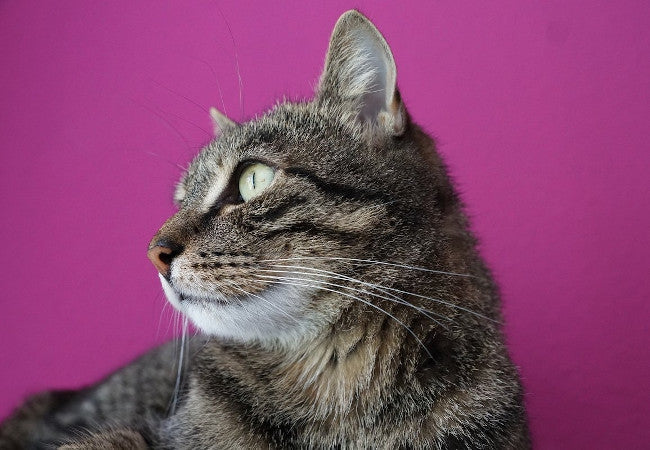Aggression is a normal part of predation and a consequence of an emotional state. However, if cats start to show aggression towards humans, this could constitute 'problem behaviour'.
Understanding your cats' body language
Knowing the basic postures enables you to understand your cats' feelings. It also helps you respond more effectively to behaviour issues like aggression, which can be primarily either offensive or defensive.
Offensive postures:
- A stiff, straight-legged upright stance
- Stiffened rear legs, with the rear end raised and the back sloped downward toward the head
- Tail is stiff and lowered or held straight down to the ground
- Direct stare
- Upright ears, with the backs rotated slightly forward
- Hackles up, including fur on the tail
- Constricted pupils
Defensive postures:
- Crouching
- Head tucked in
- Tail curved around the body and tucked in
- Eyes wide open with pupils partially or fully dilated
- Ears flattened sideways or backward on the head
Determining what triggers your cats' aggressive behaviour
Fear
When cats perceive a threat, aggression escalates if they can't escape.
Territory
When cats feel an intruder is infringing on their territory. Whilst often directed at other cats, people and other animals may also be the subject of the aggression.
Play
It involves typical predatory behaviours, including stalking, chasing, attacking, running, ambushing, pouncing, leaping, batting, swatting, grasping, fighting and biting.
Redirection
When cats are aroused and agitated by an animal or person they can't get at (e.g. there's a window between them). Unable to get to the trigger of their agitation, they turn and lash out at someone - person, dog or cat - who is nearby or approaches them.
Petting-induced
When cats who enjoy being pet suddenly change their mind. It's thought that the repetitive motion over time turns from pleasant to irritating.
Pain-induced
Even well-socialised cats can lash out when someone tries to touch a painful part of them.
Dealing with your aggressive cat
- Do not try to calm or soothe your aggressive cats. Often the best way is to simply avoid them until they calm down.
- Provide additional perches. More hiding spots and perches will allow your cats to space themselves out as they prefer.
- Do not punish your cats. Punishment may not only cause your cats to be more aggressive, it will damage your relationship.
- Reward them for calm behaviours.
According to ASPCA, a number of medical conditions can cause or contribute to cats' aggression, including toxoplasmosis, hyperthyroidism, epilepsy, abscesses, arthritis, dental disease, rabies, trauma, and sensory decline or cognitive dysfunction in older cats. The first step in resolving your cats' aggression problem is to have a complete veterinary exam to assess their physical health.

